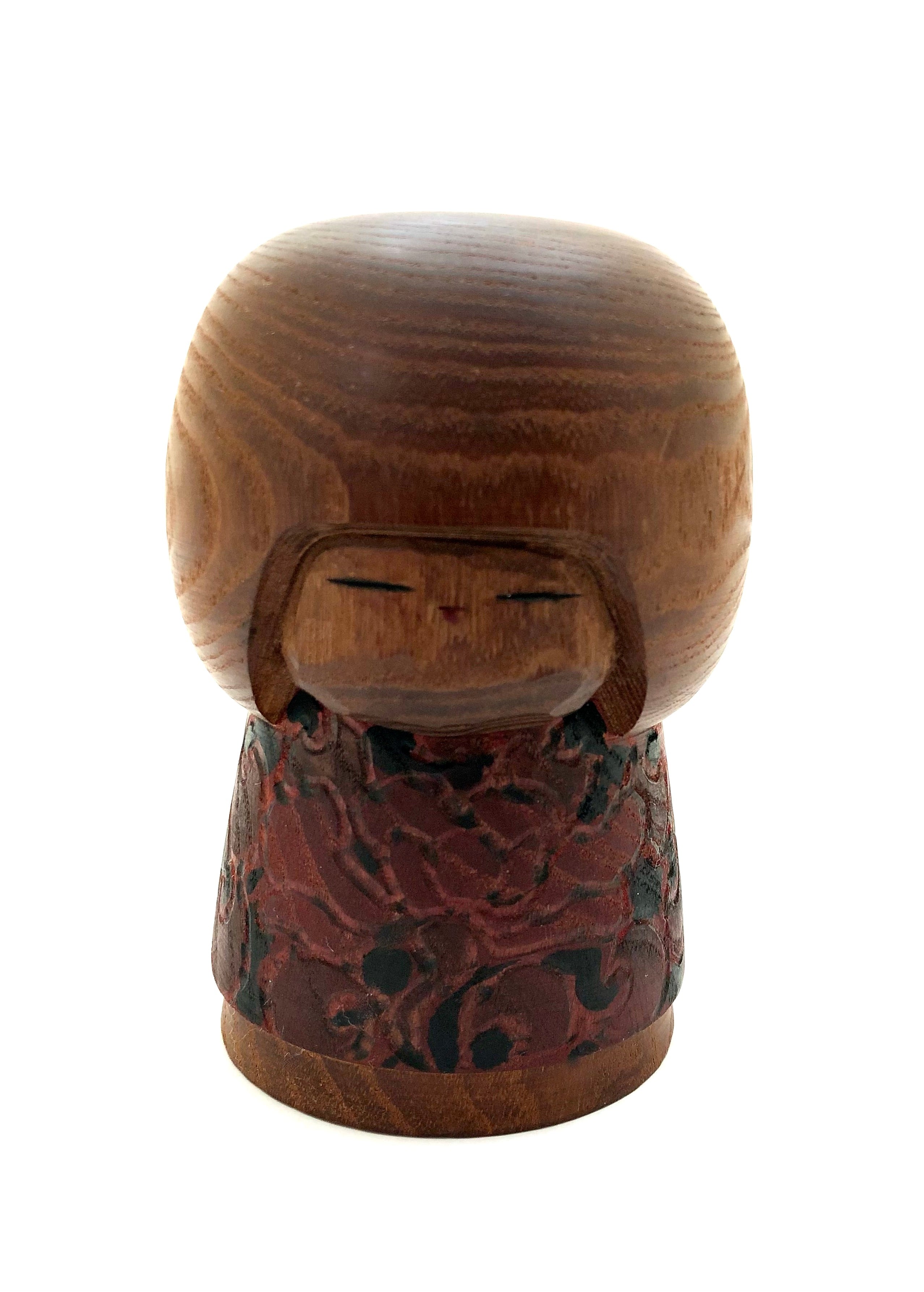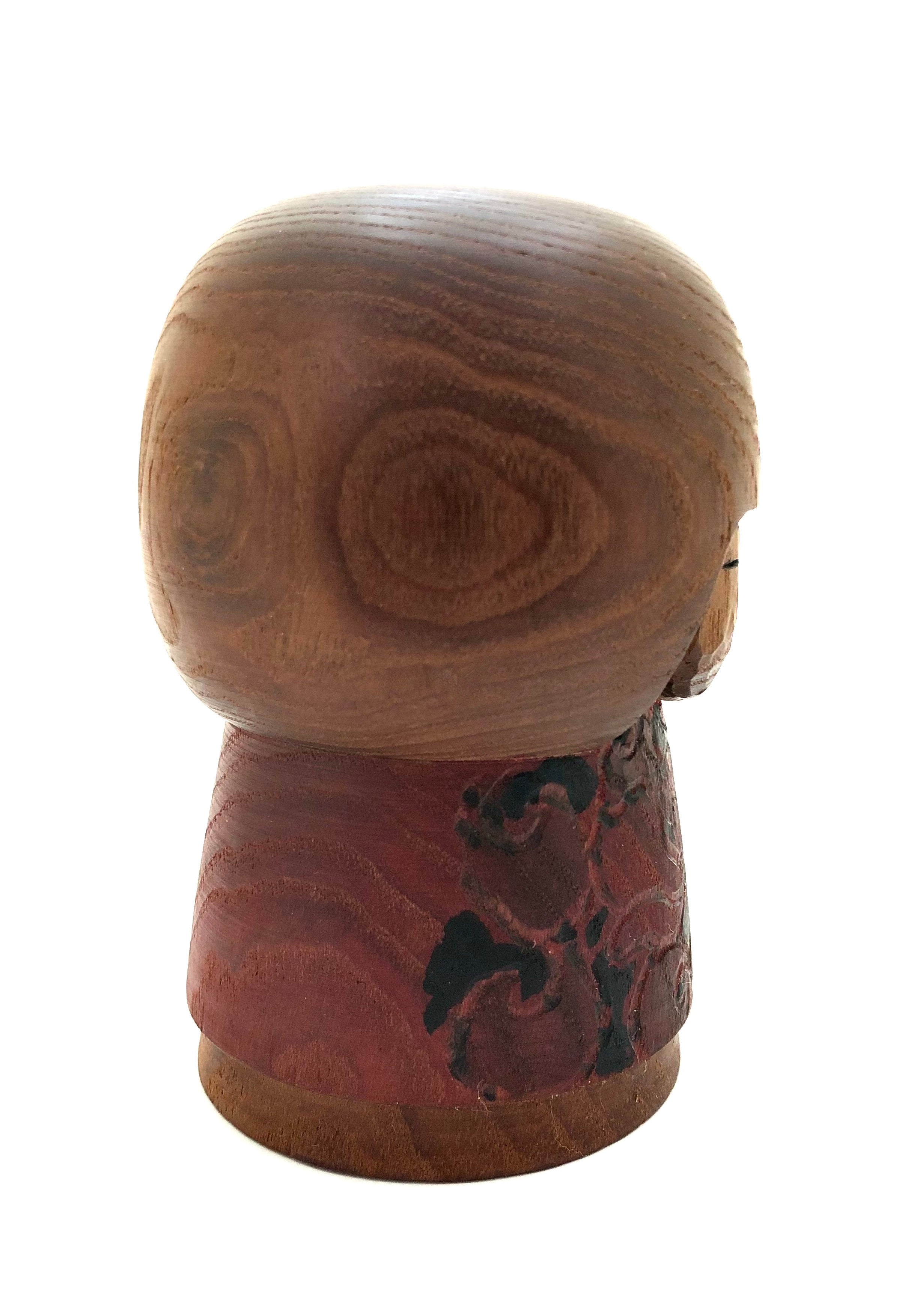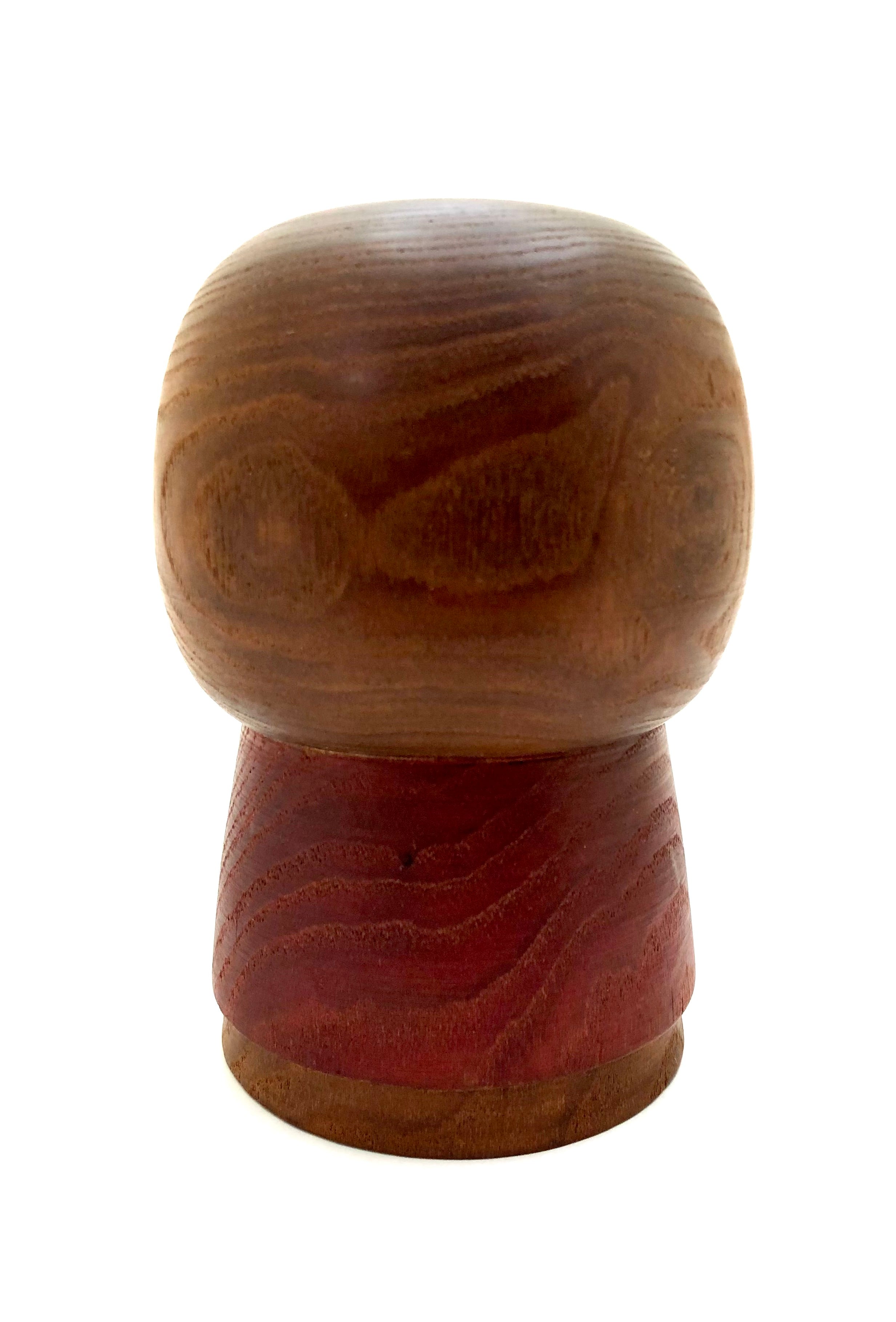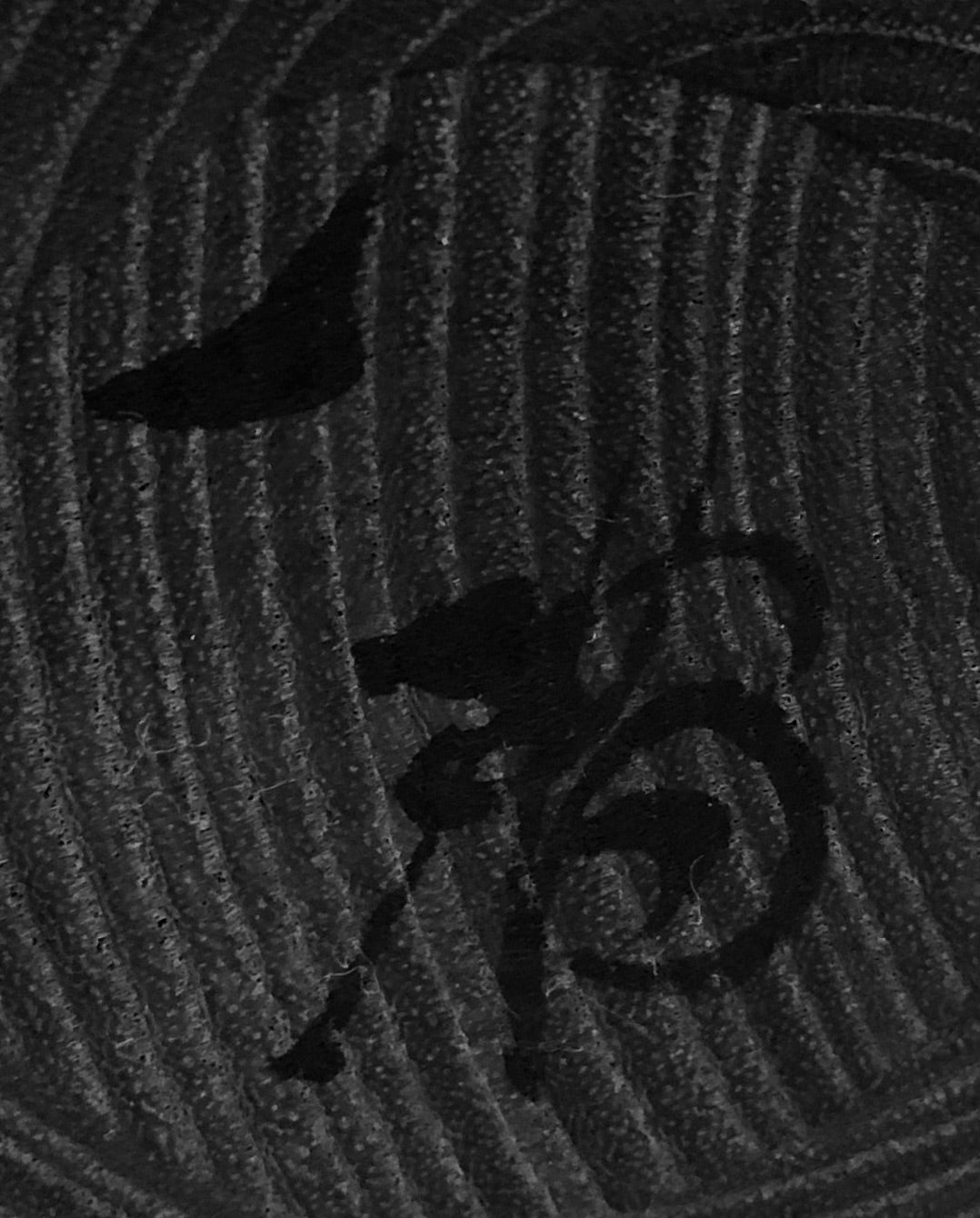



Vintage Sosaku Kokeshi entitled: "Shunen | Flower Garden" by Kuribayashi, Issetsu
Dimensions 5-1/2"h
This doll is a one-of-a-kind creation with beautiful paintings on the body having the floral motif on the body deeply carved and painted. The piece emphasizes the wood grain and natural color, with Kiku as the focal point of the Kimono. Its eyes express humility, and the face is completed with narrow slanted eyes and a tiny red-painted nose. The piece is signed.
Vintage Condition: Pristine, excellent condition affording the doll age-old elegance. Retains the original craft/workmanship showing a wonderfully-developed patina commensurate with age and unrestored. The piece meets all the standards of Sosaku Kokeshi collectibles.

Artisan
Woodworker: Kuribayashi, Issetsu
1924-2011
Biographical History:
Kuribayashi-san was born in Yonezawa city in 1924. He began making creative Kokeshi in 1955. Kuribayashi is considered one of the founding fathers of the Sosaku-Creative movement. Many of his works were one-of-a-kind creations." Yuzuriu", "Mugen" and "Kareha" are all prize winners: "Mugen”, (Eternity) won an honorary prize when it was exhibited at the 1970 World’s Fair in Osaka. Chiro was awarded the Encouragement Prize of the Minister of Education the year it was made and was displayed in the Government Pavilion at the Japan International Exposition. Additionally, a popular, Mother and Child theme is found in numerous works by various artists including Kuribayashi. Issetsu’s Kokeshi are held in the collection of the Nuremberg Toy Museum in Germany. He was the President of the Yonezawa Miyuki Association and a Member of the Nippon Kokeshi Artistic Handicraft Association.
Collector's note – descriptive qualities, standard characteristics & ornamentation styles:
Kuribayashi-san enjoys long flowing unbound hair, (taregami), and incorporates traditional hairstyles both with and without hair ornaments, (Kanzashi). The eyes express humility, and his faces typically have a tiny red spot for the nose. Shape and balance are important elements of Japanese style and decoration. These carved and complementing shapes are thought to suggest intuition and inspiration.
Explore & Learn More about Woodworker: Kuribayashi, Issetsu